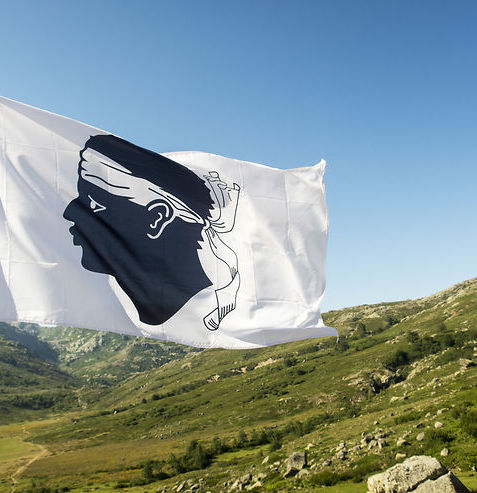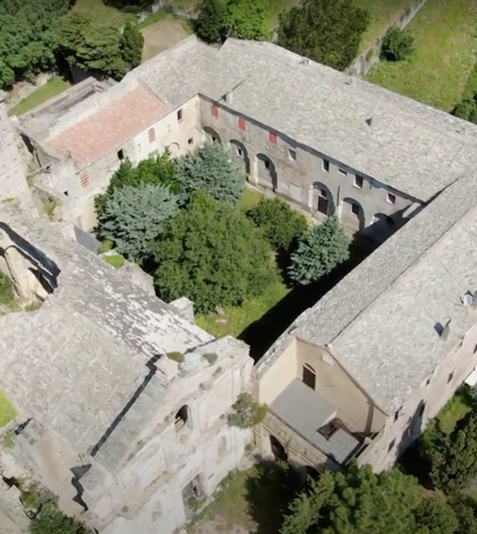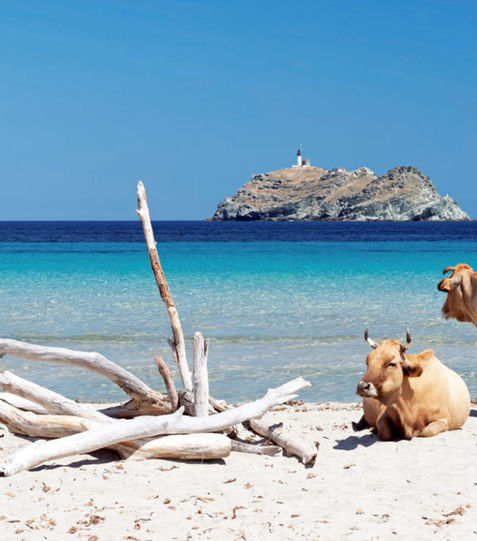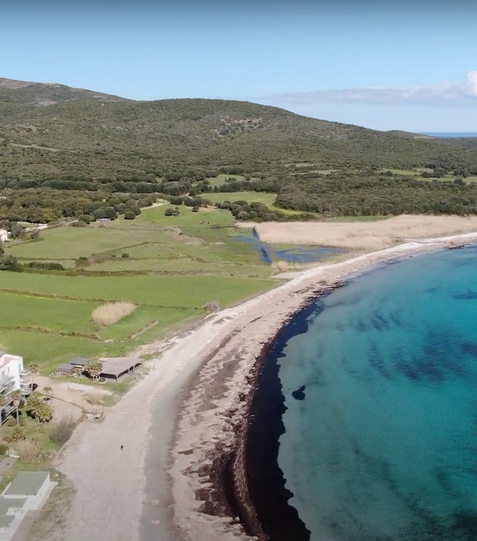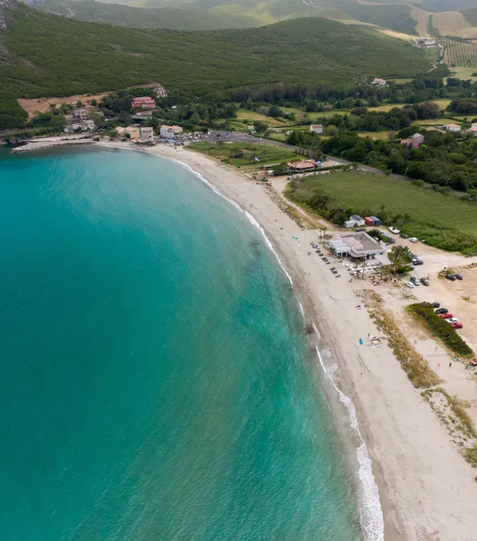
région
PORT DE PLAISANCE DANS LE CAP CORSE
Partez à la découverte de Rogliano et sa marine, Macinaggio
« Si jamais vous allez en Corse, si vous projetez d’y passer une saison, retenez ce nom de Rogliano…. Je n’ai pas vu en Corse de nid mieux fait pour le repos, de lieu de vacances plus souhaitable que ce Rogliano : 3 hameaux grimpés sur 3 éperons de montagne, au fond d’une vallée, au dessus d’une conque verte, immense, tout en forêt et qui s’ouvre au loin sur la mer...» Hervé Bazin.
Pays des moulins à blé, et de la mer, c’est le plus grand port du Cap Corse.
Très actif depuis l’antiquité, les Romains faisaient déjà commerce du vin et de l’huile transportés dans des amphores. En 1571 , ce port vit le départ des 4 felouques parties pour Lepante à la défense du tombeau du Christ, expédition heureuse...
Patrimoine culturel et architectural de Rogliano
LE CHÂTEAU DA MARE
Rogliano, capitale de la seigneurie San Colombano
Rogliano donc, est un superbe village du Cap Corse, composé de plusieurs hameaux qui s’étagent au dessus de la marine de Macinaggio. Cet ancien Pagus Aurelianus a longtemps été la capitale de la Seigneurie de San Colombano aux mains des seigneurs Génois, les DA MARE. Leur château, construit en 1198, ne nous laisse que ses ruines majestueuses sur un piton, au pied des montagnes : donjon, citernes, murailles d’enceinte si imposantes depuis 1554, année où il fut démoli par les Génois.
Et c’est en revenant de l’inauguration du Canal de Suez, que l’Impératrice Eugénie, fit une escale improvisée à Macinaggio, et se rendit à pied jusqu’à Rogliano, au souhait d’un de ses marins qui avait fait l’humble demande d’aller dire bonjour à sa mère, résidant le hameau de Magna. La route était à l’époque en mauvais état, et c’est à l’Eglise que l’impératrice s’arrêta, sans avoir le courage de continuer encore un kilomètre pour atteindre Magna. Elle fit don de la table Sainte, élégante balustrade en marbre de Carara. Et elle offrit un mouchoir brodé à chacune des petites filles venues l’accueillir en cette froide nuit, sur la place de l’église.
C’est depuis que la route reliant Macinaggio à Rogliano porte le nom de « chemin de l’Impératrice ».
LE COUVENT
Giacomo Da Mare, puissant Seigneur inquiet du salut de son âme, laisse pour testament en 1520 toutes ses terres pour y construire un monastère et fait fondre toutes ses monnaies, ses bijoux et son or afin d’en faire calices et burettes...
LA CONFRÉRIE, OU ÉGLISE STE CROIX
A la mort de son cousin Giacomo Santo Da Mare, Jacques Negroni voulut que le tombeau des Da Mare, actuelle église de St Agnel fut à jamais fermé. Il fit alors construire une nouvelle église juste en face, pour lui servir de tombeau ainsi qu’à ses descendants, et il fut le premier à y être inhumé en janvier 1592.
L’EGLISE ST AGNEL
Agnel était un moine curé du VIème siècle, parti en croisade contre les infidèles, et fut le premier à combattre la barbarie en Corse. En 1510, les Roglianais construisent leur église et se mettent sous la protection de St Agnel, dans l’espoir d’être à l’abri des invasions barbaresques… Cette église fut agrandie au XVIII ème siècle et enrichie de sculptures et de peintures…
Le village ayant été plus souvent qu’à son tour la proie des barbaresques, vit fleurir au XVI et XVII siècle une bonne dizaine de tours rondes pour la surveillance. Les tours carrées construites à l’intérieur des terres servaient d’habitation aux notables et permettaient à la population de s’y abriter en cas d’attaque...
LES MOULINS À VENT
A ce paysage s’invitent avec bonheur les restes des moulins à vent sur les collines, constructions rondes, décapitées, qui pourraient nous rappeler les tours de guet…. Imaginons un instant l’effet heureux que pouvait produire ces moulins lorsqu’ils tournaient au gré du vent !
LES PALAIS DES AMÉRICAINS
Dans ce décor de Renaissance et ruines du Moyen Age, se détachent, superbes, les imposantes maisons carrées des Américains…. A la fin du XIX ème siècle, nombreux cap corsins émigrent vers l’Amérique Centrale pour survivre. Certains y firent de bonnes affaires et envoyèrent des dollars nécessaires pour la construction des belles et grandes maisons avec souvent un tombeau aussi majestueux. On fit appel aux Génois pour la construction de ces édifices d’où le style « maison et jardin à l’Italienne »
LES TOURS
Des trente sentinelles de schiste construites le long des 92 km de côtes cap-corsines, il n'en reste plus que quinze debout, plus ou moins bien conservées.
De Lavasina à Negru en passant par les îles Finocchiarola et celle de la Giraglia, elles marquent le paysage cap-corsin.
Rondes pour supprimer tout angle mort et favoriser la posture défensive, ces constructions, hautes de 9 à 17 mètres,
étaient gardées par un petit nombre d’hommes en armes payés par chaque communauté villageoise.
Elles s’élèvent sur plusieurs niveaux : un sous-sol pour les réserves d'eau, de vivres et de munitions; deux étages pour loger la garnison, une terrasse bordée d’un parapet percé de meurtrières voire de canonnières à l’abri de mâchicoulis.
Ces ouvrages défensifs formaient, autrefois, un véritable réseau de communication stratégique : en cas d'approche d'un navire suspect, on allumait un feu. Ce signal était répercuté de tour en tour.
Populations et bêtes se repliaient alors vers l'intérieur des vallées pour se soustraire aux attaques des barbaresques.
Depuis 2002, ces tours sont la propriété de la Collectivité Territoriale de Corse. Cinq sont classées monuments historiques :
Erbalunga, Santa Maria della Chiapella, Albu, Nonza et Negru.
LES PLUS BELLES PLAGES DU CAP
Entre plages de sable blanc et plages de galets noirs, le cap-corse, souvent surnommé l’Ile dans l’Ile, offre un littoral des plus varié. Ponctué de ses tours génoises, on découvre de véritables havres de paix dans des écrins de verdure, loin de toute sur-fréquentation touristique. Elles font le bonheur des adeptes de nature, de plongée sous-marine, ou de farniente au bord d’une eau cristalline. De Pietracorbara à Negru, en passant par la pointe de Barcaggio, les plages sauvages ne manquent pas !




